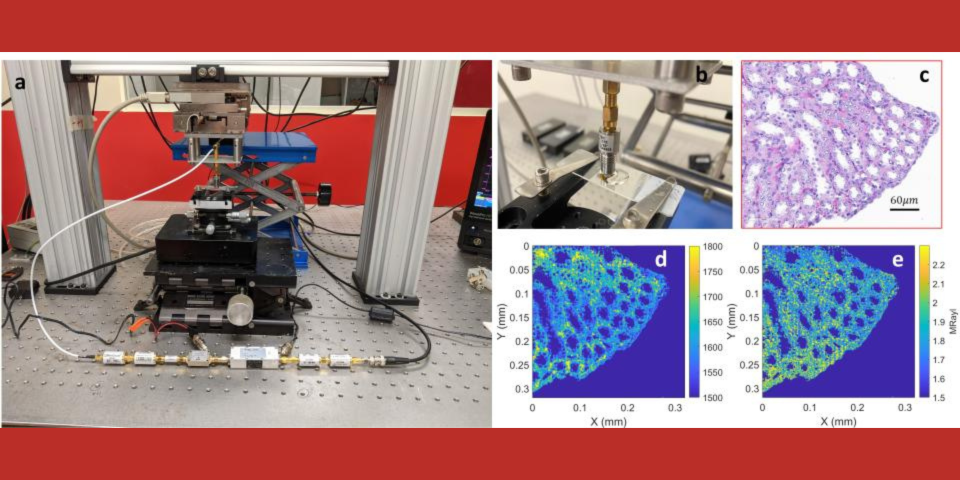The goal of this project is to develop the next generation of quantitative acoustic microscopy (QAM) systems. Specifically, data-science and coded-excitation approaches are applied for the first time to QAM technology to yield better image quality, decreased scanning time, and greater ease of use and to pave the way for a new generation of novel, low-cost, user-friendly QAM instruments. QAM permits the formation of fine-resolution (i.e., <7 µm at 250 MHz) maps of acoustic and mechanical properties of tissue sections that are <12 µm thick. These data can have great value in numerous preclinical investigations. Such property maps are not currently obtainable by any other microscopic-imaging modality, and the new generation of QAM technology made possible by the success of this proposed project could become widespread in research laboratories and microscopy suites in commercial and academic research environments. Such new-generation QAM instruments can be used by technicians with limited knowledge of QAM, and, in many ways, their use will be no more complicated than the use of a conventional bright-field microscope. These novel approaches to QAM will be demonstrated using already available resolution targets, phantoms, and biological tissues (ocular-tissue samples from a guinea pig model of myopia and cancerous human lymph nodes). During this project, optimal methods will be incorporated in a prototype QAM (pQAM) instrument capable of producing ultra-fine spatial resolution (< 2 µm) images much faster (<1 min) and for a much lower cost (<$40k) than current state-of-the-art QAM systems. In addition, pQAM use will be "turn-key" (i.e., requiring no technical knowledge and less than 1 hour of training.)


